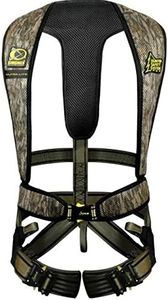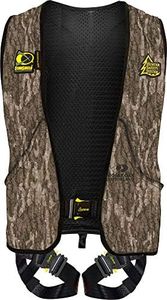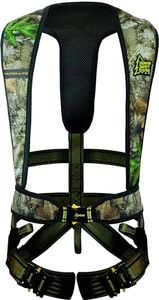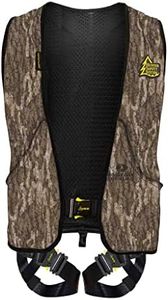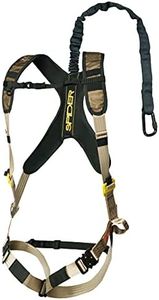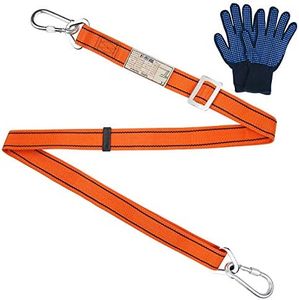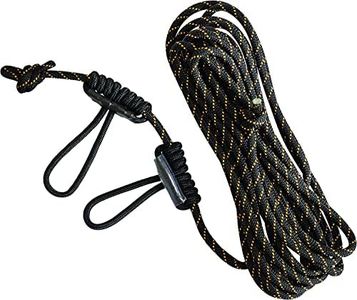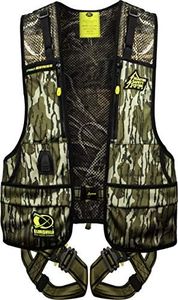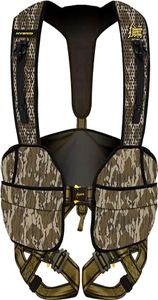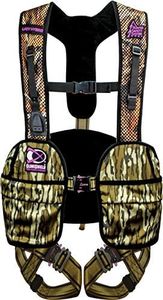We Use CookiesWe use cookies to enhance the security, performance,
functionality and for analytical and promotional activities. By continuing to browse this site you
are agreeing to our privacy policy
10 Best Hunter Safety Harness
From leading brands and best sellers available on the web.Buying Guide for the Best Hunter Safety Harness
Choosing the right hunter safety harness is essential for anyone who plans to hunt from an elevated position, such as a tree stand. A good harness helps prevent serious injuries by catching you safely in case of a fall. With many options on the market, it's important to understand the various features and decide which harness best fits your hunting style, comfort preferences, and the kind of environments you'll be in. Knowing what to look for will help you stay safe and comfortable throughout your hunt.Type (Vest, Full-Body, Chest, or Waist Harness)The type of harness refers to its overall design and how it fits your body. Full-body harnesses offer the most protection and are generally recommended because they secure your torso and legs, spreading out force in case of a fall. Vest-style harnesses combine safety with comfort, often including pockets for easy gear access. Waist and chest harnesses exist but provide less support, so they're less commonly used for elevated hunting. Your choice should depend on your comfort needs and how much mobility or storage you want during the hunt.
Weight CapacityThis spec tells you the maximum body weight the harness can safely support, including your clothes and gear. It ensures the harness can hold you if a fall occurs. Harnesses are usually grouped by weight ratings, such as up to 250 lbs, 300 lbs, or even higher. Always pick a harness with a weight capacity that covers your body weight plus all the clothing and equipment you’ll be wearing, to make sure the harness works correctly under real hunting conditions.
Comfort and PaddingComfort features like padding on straps and back panels make the harness easier to wear for many hours. Some harnesses use minimal padding for lighter weight and easier movement, while others add thick padding for extended comfort during long hunts. If you plan to wear your harness all day, prioritize heavier padding and soft materials; if you only hunt for short periods or need freedom of movement, a sleeker design may be better.
AdjustabilityAdjustability means how well you can change the harness fit with straps around your shoulders, waist, and legs. Highly adjustable harnesses offer better comfort for people of different body shapes and allow for extra clothing in cold weather. Look for harnesses with easily accessible buckles and straps if you want a custom fit, especially if you hunt in varied seasons and change your clothing layers often.
Ease of Use (Buckles & Fastenings)This refers to how simple it is to put on, take off, and secure your harness. Some harnesses have quick-release buckles and simple closures, while others require more steps to get in and out. If you want to set up quickly in the dark, prioritize easy-to-use harnesses, but always check that whatever system is used is secure and reliable for safety.
Tether and Lanyard LengthThe tether is the strap that connects you to the tree, and lanyard length controls how far you can move while remaining attached. Shorter tethers keep you closer to the tree, which can be safer but more restrictive, while longer tethers allow more freedom but may increase the risk of swinging in a fall. Consider a length that gives you enough movement for hunting but keeps you as close to the tree as possible for safety.
Suspension Relief FeaturesSome harnesses have built-in straps or loops that help you if you are left suspended after a fall. These features make it easier to relieve pressure on your legs while waiting for help, reducing the risk of injury. If you often hunt alone or in remote areas, look for harnesses with suspension relief features for added safety.



